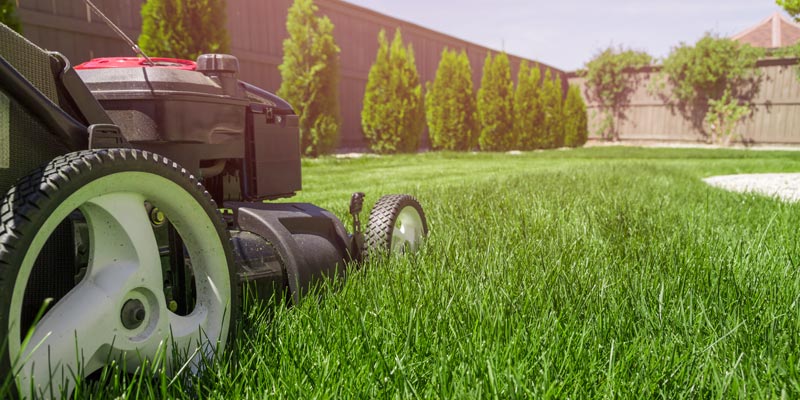
The height at which you mow your lawn not only varies by the variety of grass you have in your yard, but also can determine how much water is needed to maintain its fullest green color all through the spring and summer. By mowing your lawn too short, you may not leave enough of the grass blades left to sustain a healthy growth. However, if the grass gets too long, it can become prone to pests or disease.
Some varieties of grasses, like Bermuda, tolerate very low mowing heights. That’s one reason why these are most commonly used for golf course greens and other sports fields. Other varieties, like certain Fescue varieties need to be left at a higher mowing height in order to thrive.
A General Rule
A good general rule is cool season grasses (those that stay green even during cooler months) should be left at about 2 ½ inches for optimal growth. Only the top 1/3 of the blades of grass should be cut with each mowing – make sure you’re mowing the lawn on a consistent basis to maintain best color and thickness.
Warm season grasses (those that go dormant in the winter months) can be mowed to a shorter height. These can be mowed to a height of 3/8 to 1 inch. Again, be sure to only remove the top 1/3 of the grass blades, or the plant can be injured.
We’ve compiled this handy chart to give you the recommended mowing heights for all the varieties of grass we grow:
|
Turfgrass Variety |
Recommended Mowing Height |
|
Elite Plus |
1 1/2 to 2 1/2 inches |
|
Tifgreen™ |
3/8 to 3/4 inches |
|
Tifway™ |
3/8 to 3/4 inches |
|
Celebration |
3/8 to 1 inch |
|
TifTuf™ |
3/8 to 3/4 inches |
|
St. Augustine |
1 1/2 to 2 1/2 inches |
|
Ball Park Blend |
3/4 to 1 1/4 inches |
|
Bluerye |
1 1/4 to 2 inches |
If you aren’t sure how much grass to take off, it is best with both the warm and cool season grasses to err on the side of keeping the grass taller rather than shorter. Just as with pruning a bush, over pruning can damage the plant. Moreover, the taller you allow your grass to grow, the more shade provided to the root structure. That helps grasses thrive, even in drought conditions.
Less frequent mowing (roughly every two weeks) is needed for cool season grasses in the winter. Warm season grasses need very little mowing in the winter since they are dormant (once per month?). All grass types need mowing roughly once per week in the spring, summer and fall.
Mowing Tips
- Mow 7 days after installation. Waiting too long means you cut off more than 1/3 of the leaf blade and mowing sooner does not allow time for the sod to establish roots.
- Keep the mower blades sharp for best performance.
- Mow when the grass is dry.
- Mow during the cooler part of the day – easier on the person doing the mowing!
- Never remove more than 1/3 of the grass blades as this can injure the individual plants and slow the growth of your grass.


